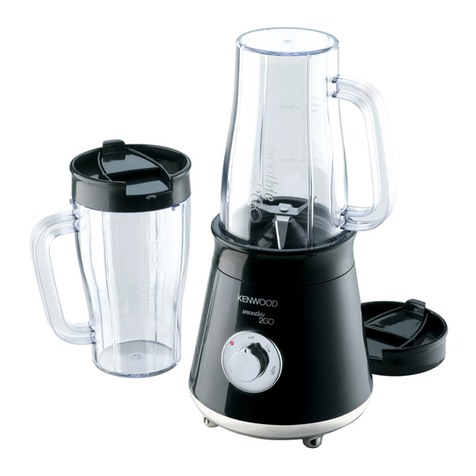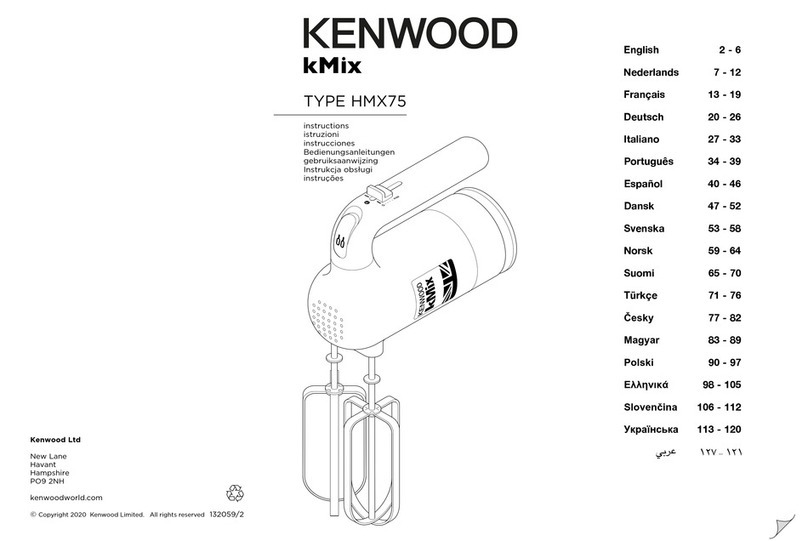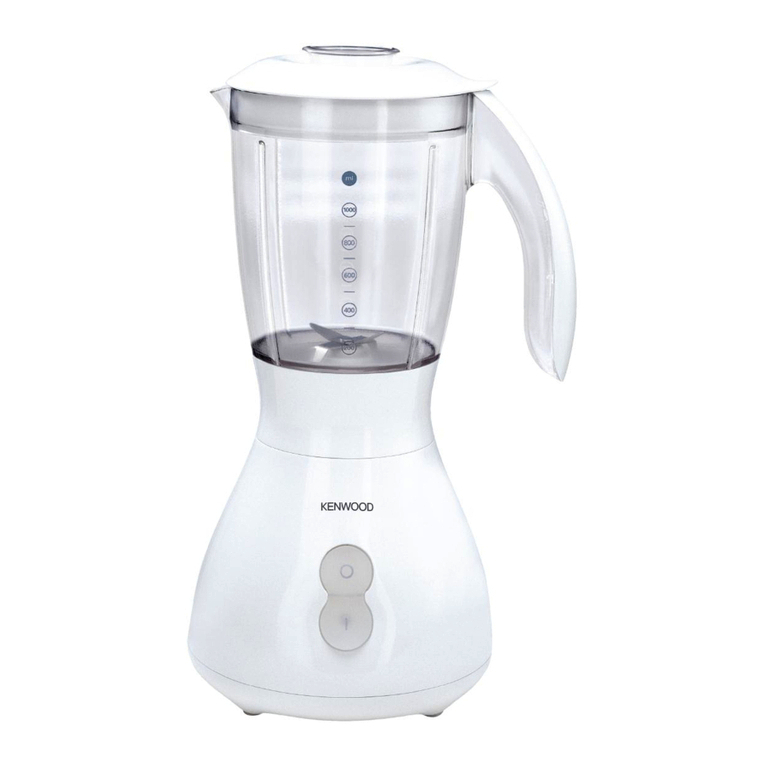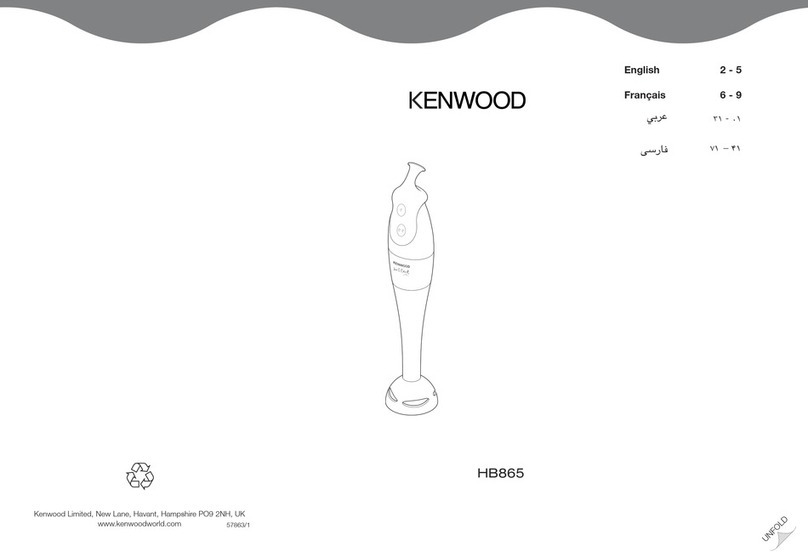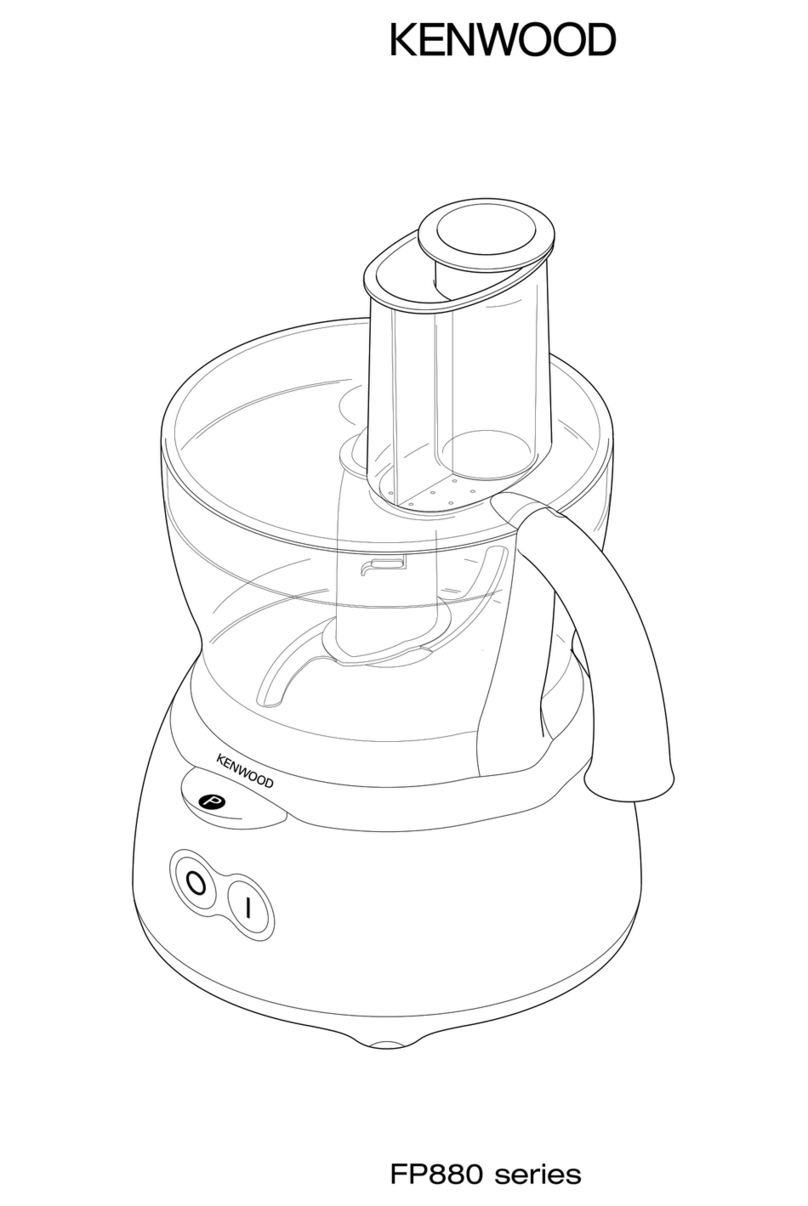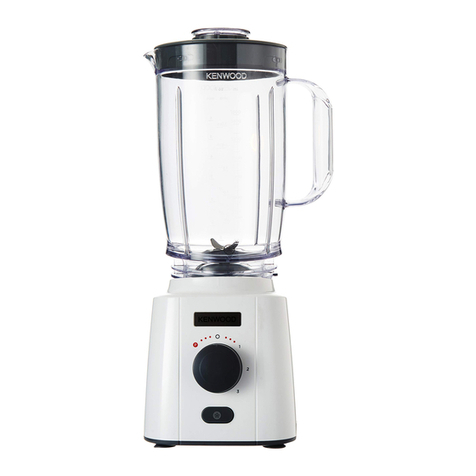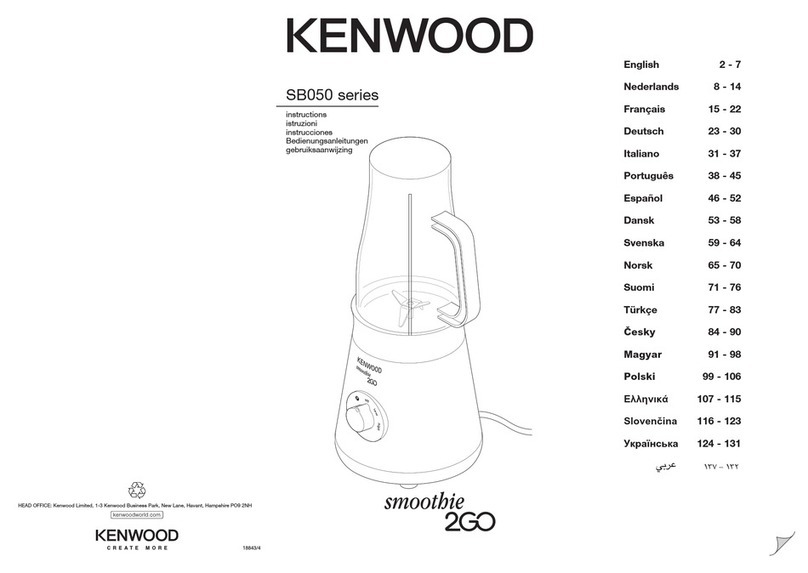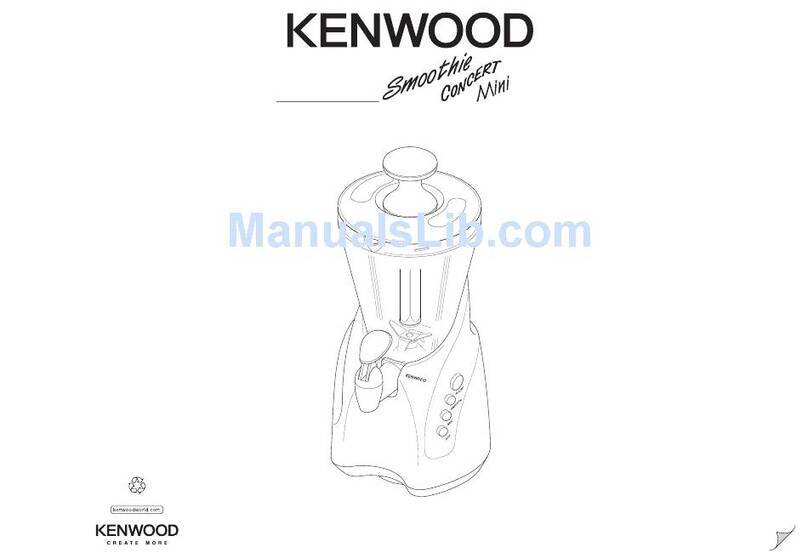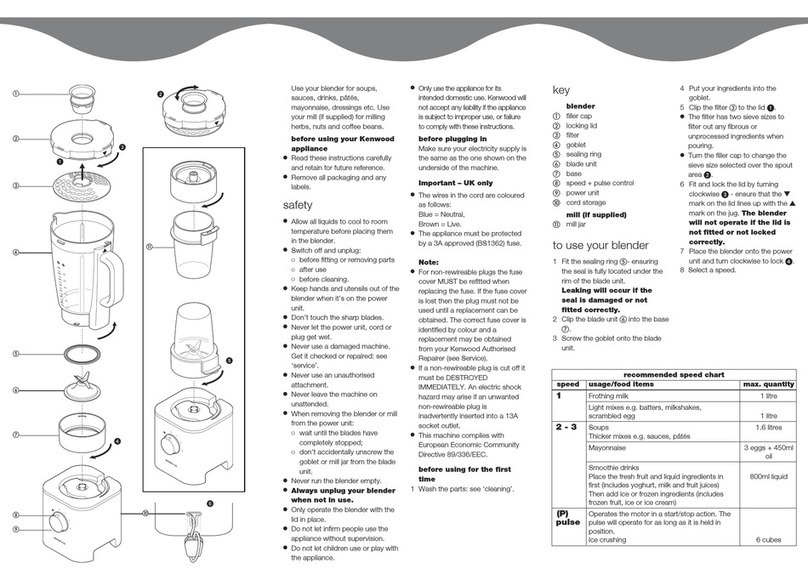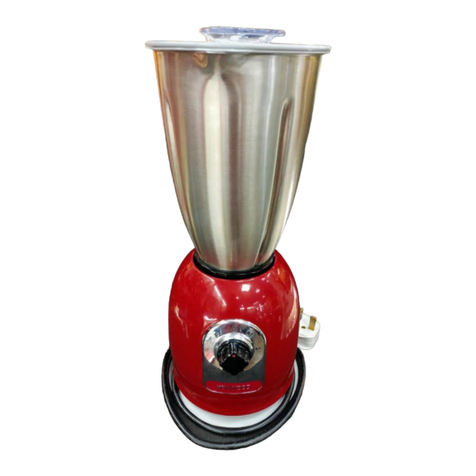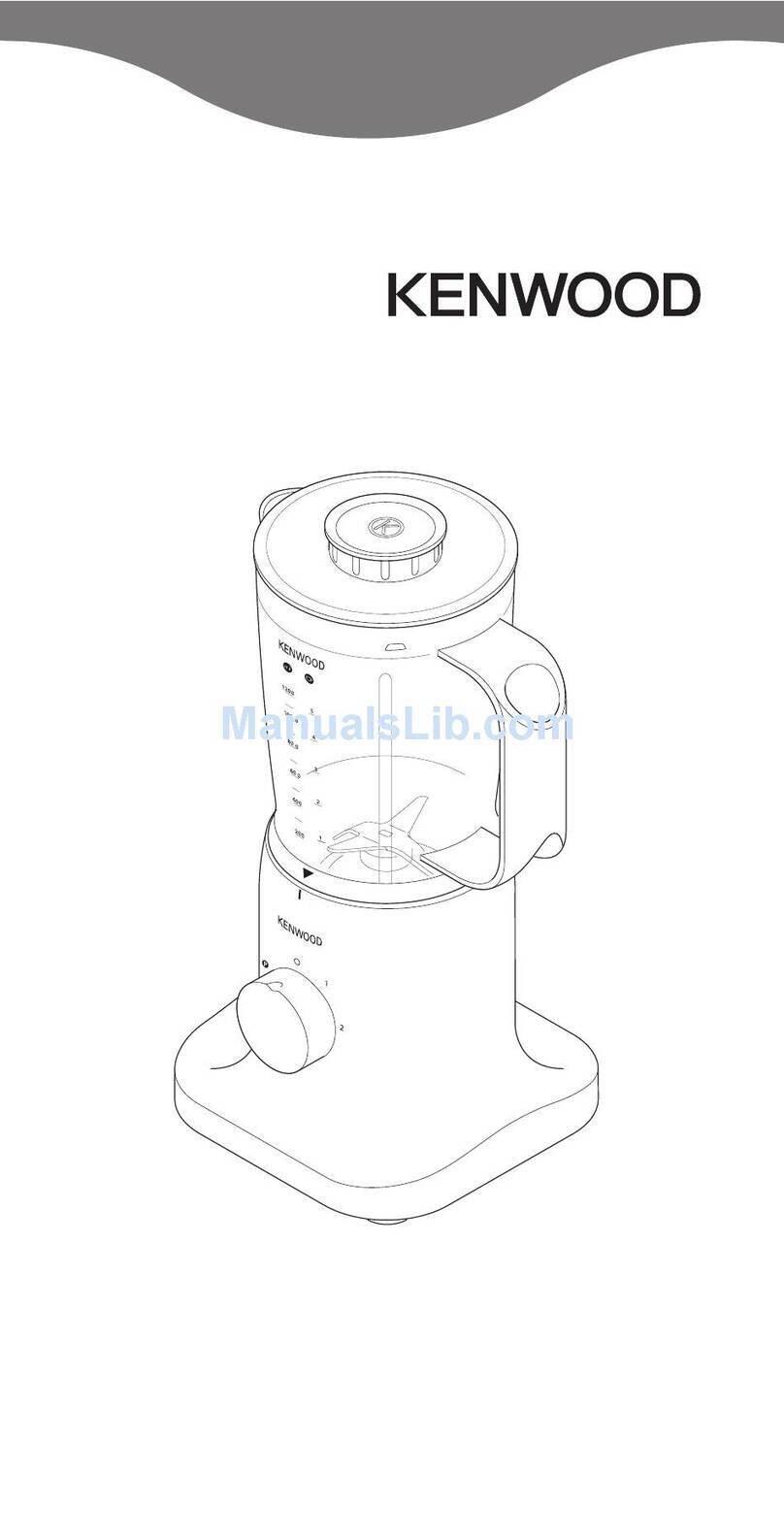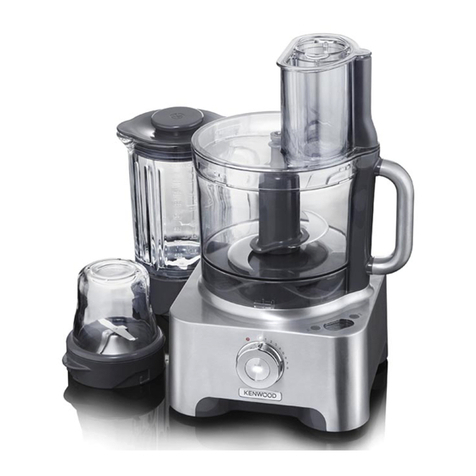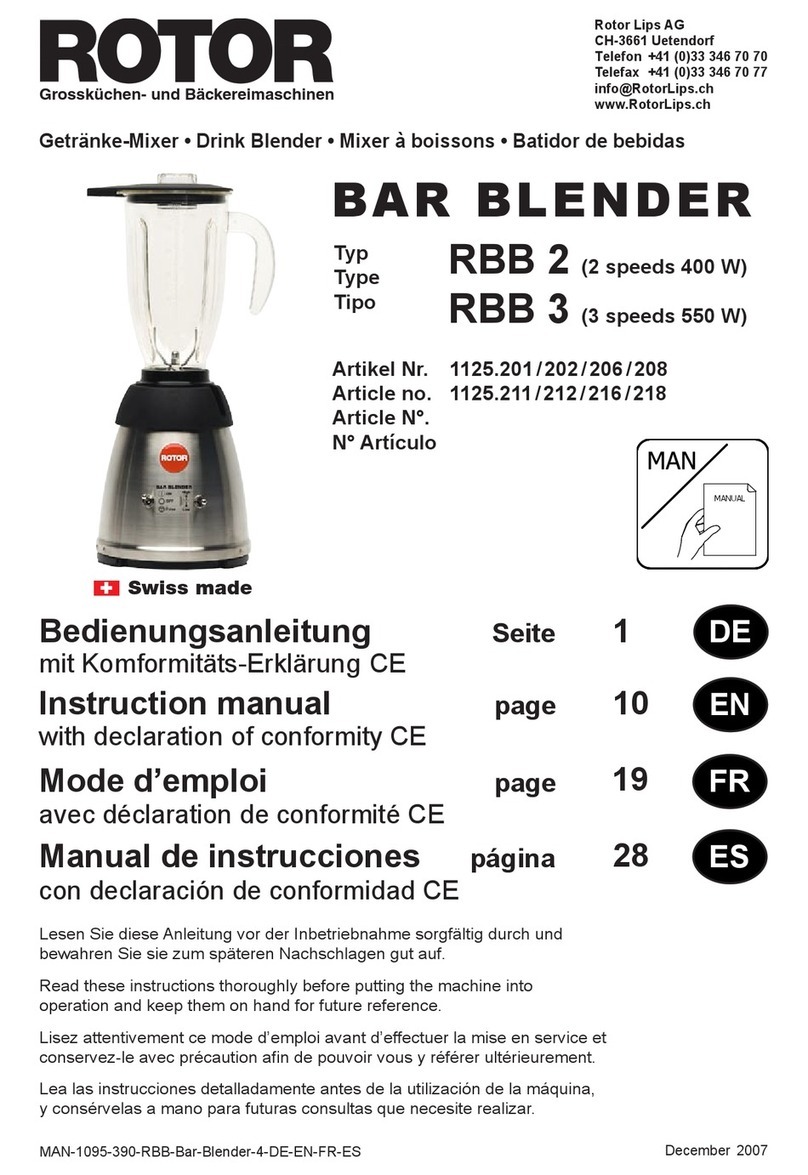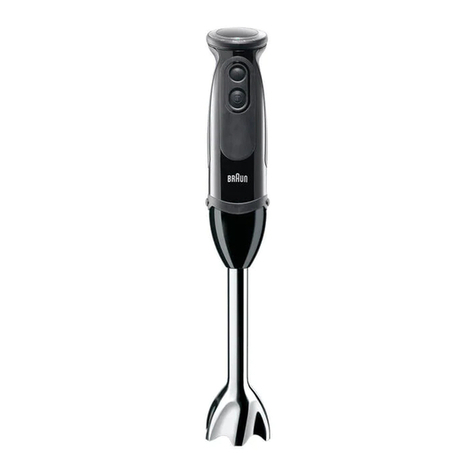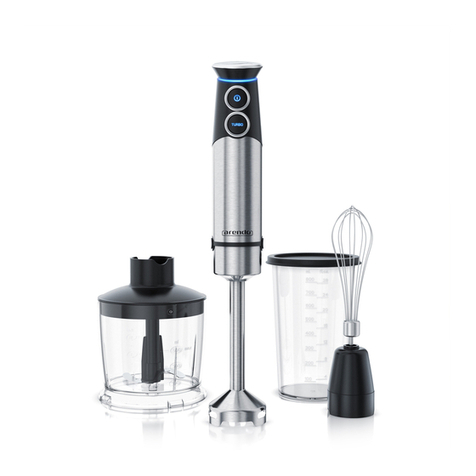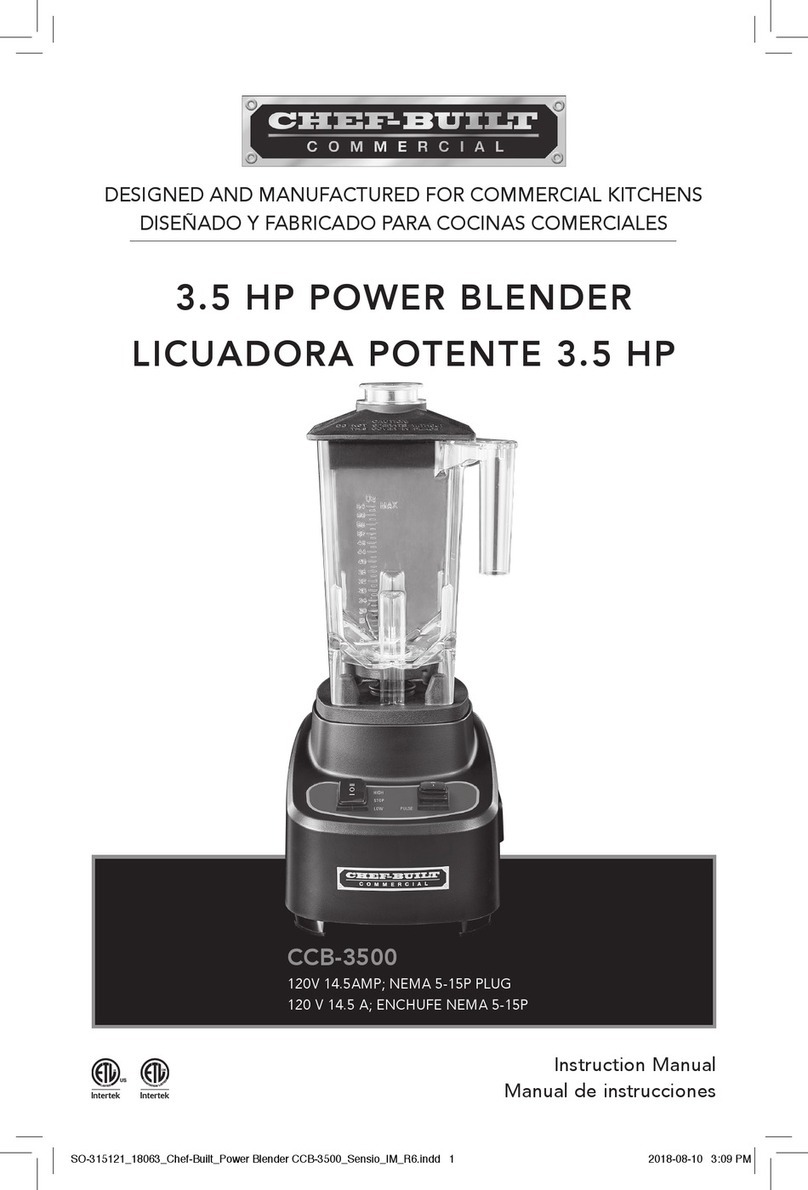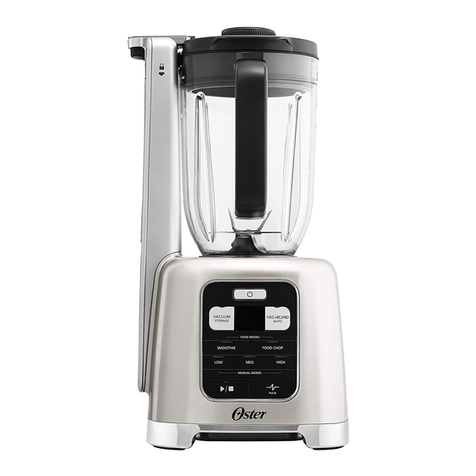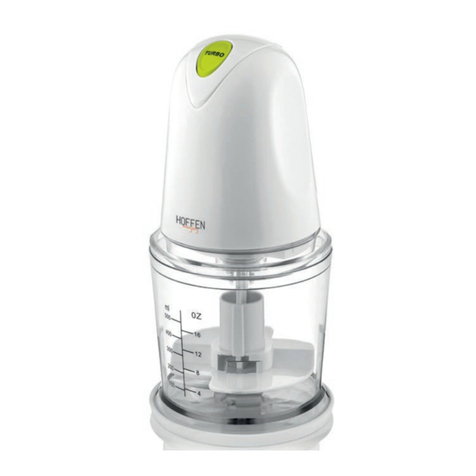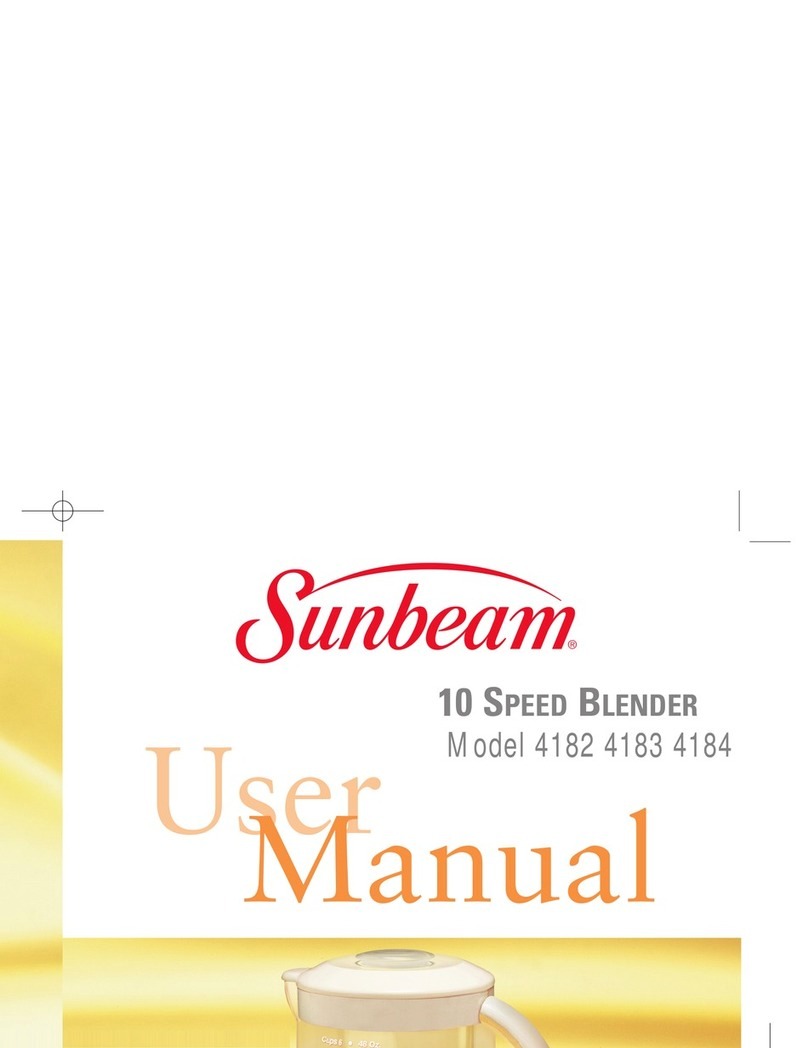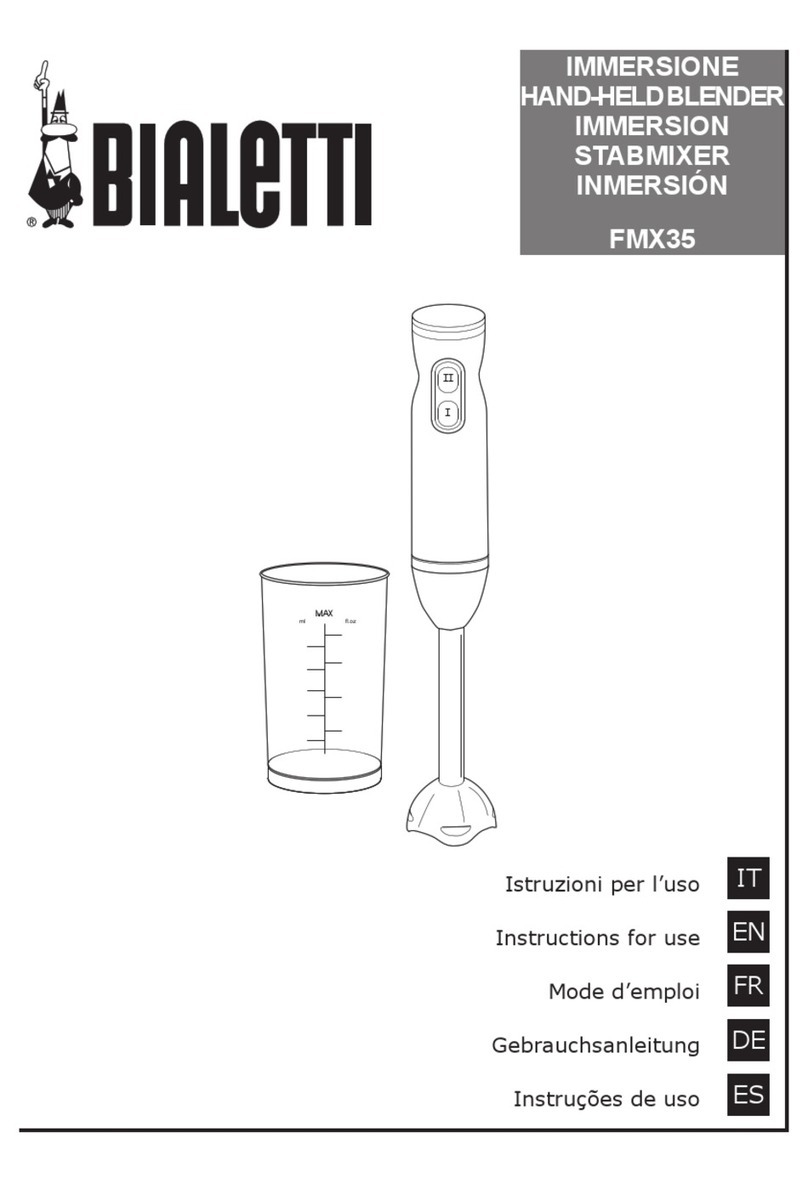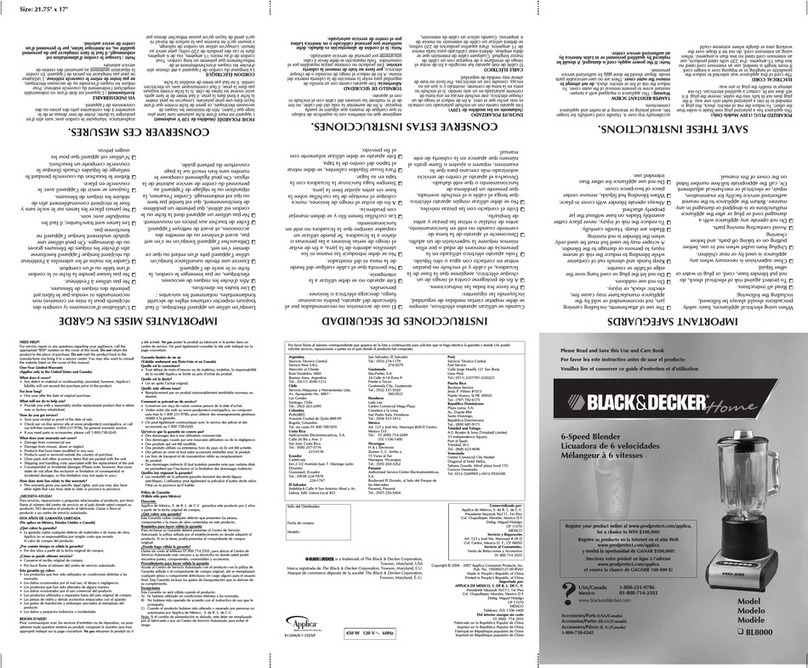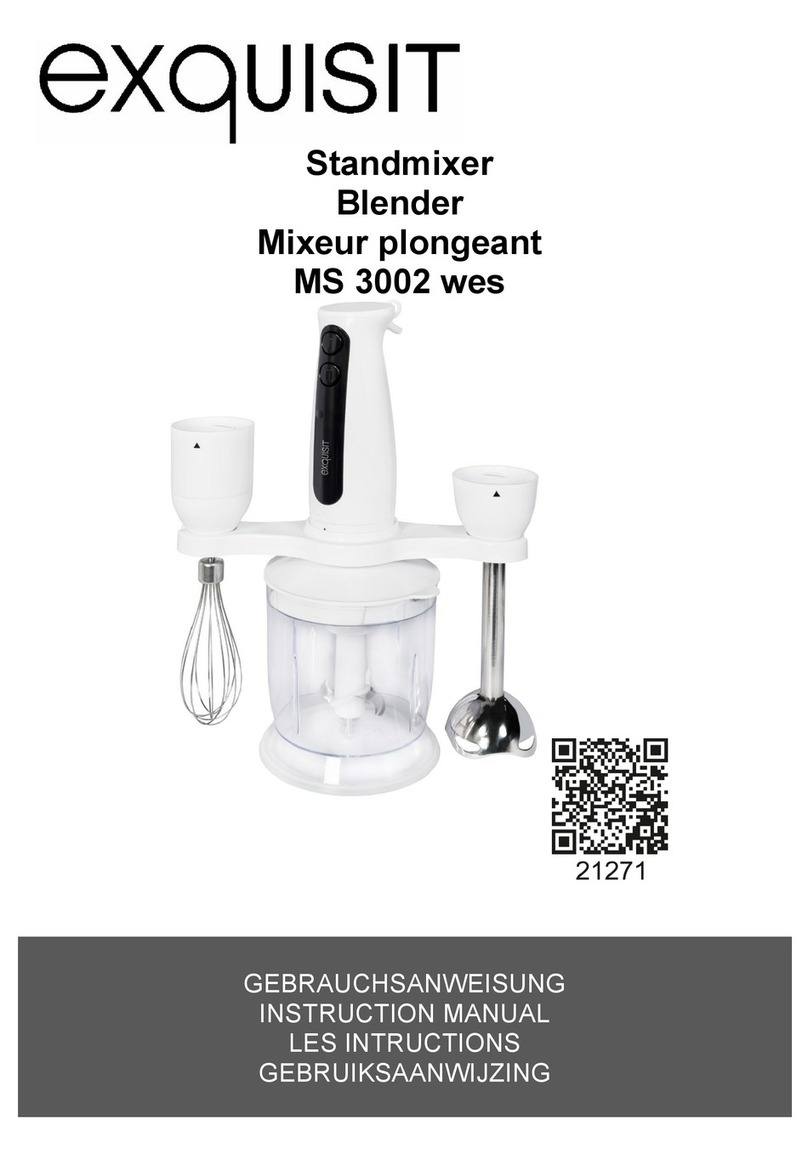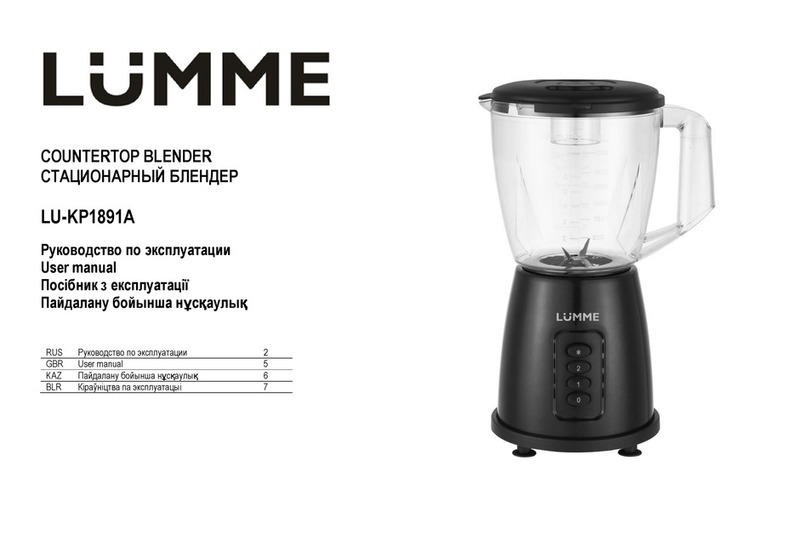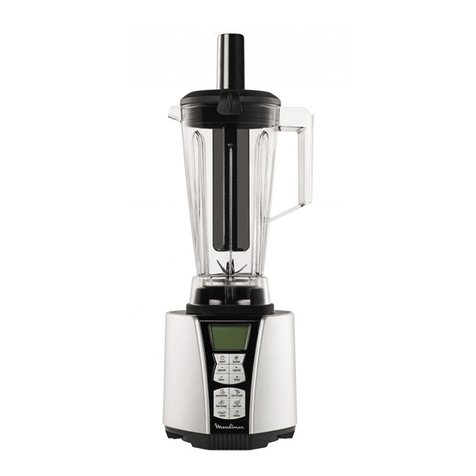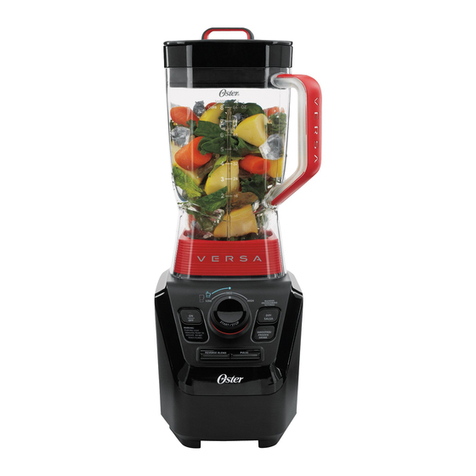using the attachments
Refer to recommended speed chart for each attachment.
헁knife blade
The knife blade is the most versatile of all the attachments. The
length of the processing time will determine the texture achieved.
For coarser textures use the pulse control.
Use the knife blade for cake and pastry making, chopping raw
and cooked meat, vegetables, nuts, pate, dips, pureeing soups
and to also make crumbs from biscuits and bread.
hints
knife blade
lCut food such as meat, bread, vegetables into cubes
approximately 2cm/3⁄4in before processing.
lBiscuits should be broken into pieces and added down the feed
tube whilst the machine is running.
lWhen making pastry use fat straight from the fridge cut into
2cm/3⁄4in.cubes.
lTake care not to over-process.
헂dough tool
Use for yeasted dough mixes.
lPlace the dry ingredients in the bowl and add the liquid down the
feed tube whilst the machine is running. Process until a smooth
elastic ball of dough is formed this will take 60 - 90 secs.
lRe-knead by hand only. Re-kneading in the bowl is not
recommended as it may cause the processor to become
unstable.
헃twin beater geared whisk
Use for light mixtures only eg egg whites, cream, evaporated milk
and for whisking eggs and sugar for fatless sponges. Heavier
mixtures such as fat and flour will damage it.
using the whisk
1 Fit the drive shaft and bowl onto the power unit.
2 Push each beater securely into the drive head .
3 Fit the whisk by carefully turning until it drops over the drive shaft.
4 Add the ingredients.
5 Fit the lid - ensuring the end of the shaft locates into the centre
of the lid.
6 Switch on.
important
lThe whisk is not suitable for making one-stage cakes
or creaming fat and sugar as these mixes will
damage it. Always use the knife blade for cake
making.
hints
lBest results are obtained when the eggs are at room
temperature.
lEnsure the bowl and whisks are clean and free from grease
before whisking.
lCarefully fold in flour and sugar by hand using a metal spoon for
fatless sponges and meringues.
헄maxi-blend canopy
When blending liquids, use the maxi-blend canopy with the knife
blade. It allows you to increase the liquid processing capacity
from 1 litre to 1.5 litres, prevents leaking and improves the
chopping performance of the blade.
1Fit the drive shaft and bowl onto the power unit.
2 Fit the knife blade.
3 Add ingredients to be processed.
4Fit the canopy over the top of the blade ensuring it sits on the
ledge inside the bowl . Do not push down on the
canopy, hold by the centre grip.
5Fit the lid and switch on.
slicing/grating discs
reversible slicing/grating discs - thick 헅, thin 헆
Use the grating side for cheese, carrots, potatoes and foods of a
similar texture.
Use the slicing side for cheese, carrots, potatoes, cabbage,
cucumber, courgette, beetroot and onions.
fine Julienne style) chipper disc
Use to cut: potatoes for Julienne style
French fries; firm ingredients for salads, garnishes, casseroles
and stir fries (eg carrot, swede, courgette, cucumber).
to use the cutting discs
1 Fit the drive shaft and bowl onto the power unit.
2 Holding by the centre grip , place the disc onto the drive shaft
with the appropriate side uppermost .
3 Fit the lid.
4 Choose which size feed tube you want to use. The pusher
contains a smaller feed tube for processing individual items or
thin ingredients.
To use the small feed tube - first put the large pusher inside the
feed tube.
To use the large feed tube - use both pushers together.
5 Put the food in the feed tube.
6 Switch on and push down evenly with the pusher - never put
your fingers in the feed tube.
hints
lUse fresh ingredients
lDon’t cut food too small. Fill the width of the large feed tube fairly
full. This prevents the food from slipping sideways during
processing. Alternatively use the small feed tube.
lWhen using the chipper disc, place ingredients horizontally.
lWhen slicing or shredding: food placed upright comes out
shorter than food placed horizontally .
lThere will always be a small amount of waste on the plate or in
the bowl after processing.
5


